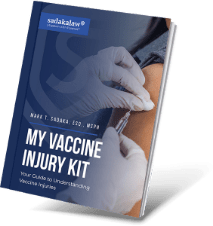From the groundbreaking science of Louis Pasteur in the mid-19th century came hope and help in the fight against infectious disease. Cholera, rabies, anthrax and smallpox–all diseases that are rare today, ravaged the world claiming life after life. The mystery surrounding their cause brought deep-thinking scientists to a determination to find a cause and bring about a cure. Facing years of ridicule and struggle, Pasteur successfully developed vaccinations by discovering that weakened viruses–or those that were allowed to sit in a petri dish for several days did not cause illness, but the opposite. By providing what we now call immunity, both animals and humans in his care overcame disease and lived long happy lives.
Pateur’s work, though mostly trial and error, brought about success. Today the development of vaccines is far more advanced than the methods used in the 1800’s but the human body, and its response to vaccines is the same. High-tech laboratories and sterile proceedures now dominate the development of vaccines for human use as studies are continuing into how to make better, safer vaccines. The manufacturing process itself is complicated, to say the least. Each vaccine must be developed specific to each virus or bacteria. No two vaccines have the same components, development or manufacturing process.
The goal of immunization is to produce protective properties in the body by introducing a germ–but not enough to cause illness. Tricky to say the least, scientists have three ways of completing this task. To ensure safety, disease causing viruses and bacteria may be weakened, inactivated with chemicals, or dissected–only using a portion of the antigen’s DNA for introduction into the body.
Weakened vaccines are sometimes called “live” vaccines–meaning that they will still be reproducing when injected into the body but only enough to produce antibodies to fight future infections. Because they are still living, live vaccines are not given to anyone with a weakened immune system—any lack of defense could allow the virus or bacteria to over-produce and result in illness.
Inactivated vaccines are treated with chemicals that kill off the germs to make them unable to replicate within the body. Flu, rabies and Hepatitis A vaccines are manufactured with this particular method, and are said to be inable to cause illness in any form. Despite these claims however, many people feel that side effects still occur after receipt.
Removing a portion of the virus or the toxins released from bacteria for introduction into the body is another way to make a vaccine. The HPV, DTaP, and Hepatitis B vaccines are made from this method. These vaccines are usually less potent and will require more doses (three on average) to produce immunity and boosters may be required in the years to come to ensure that immunity remains strong.






